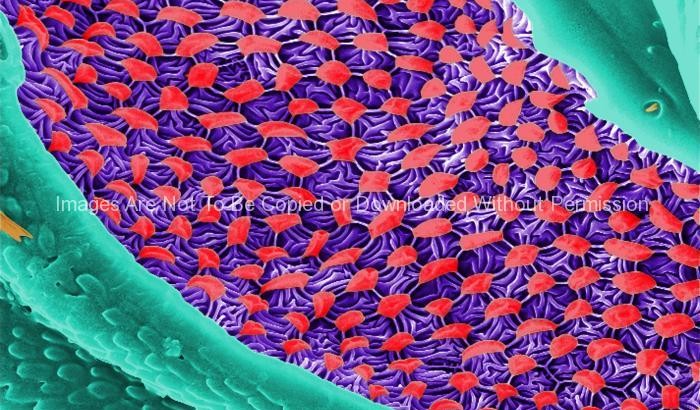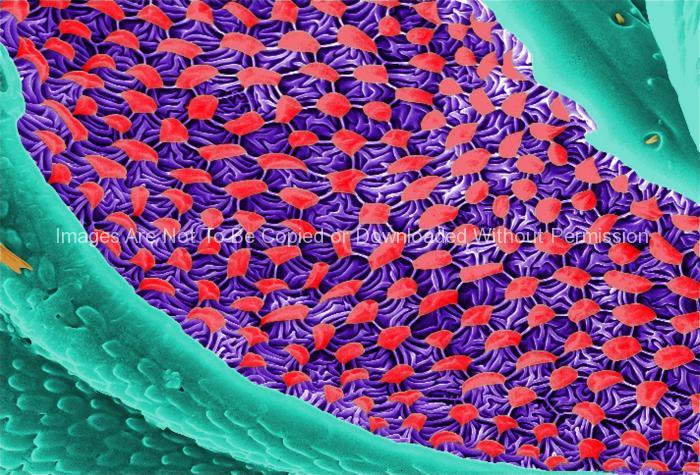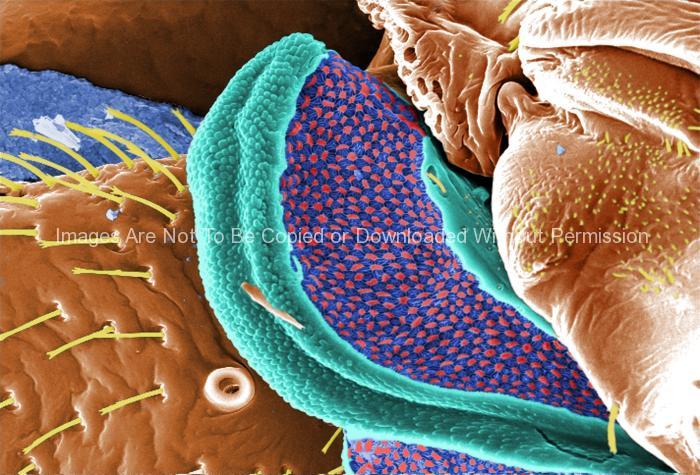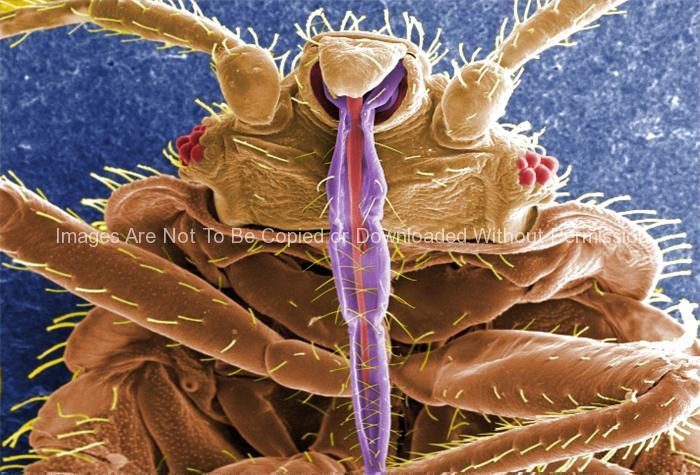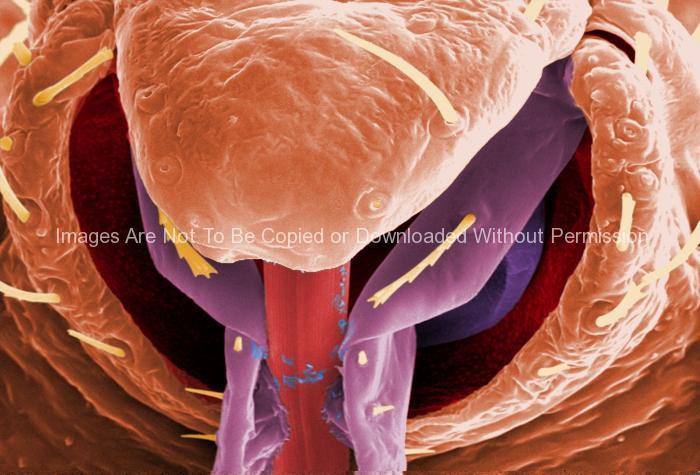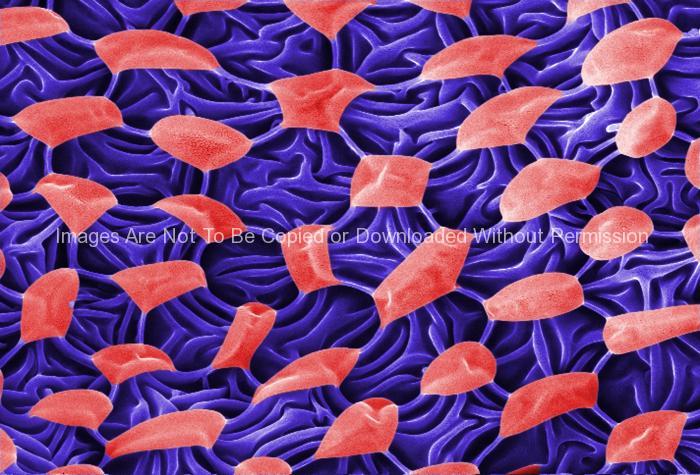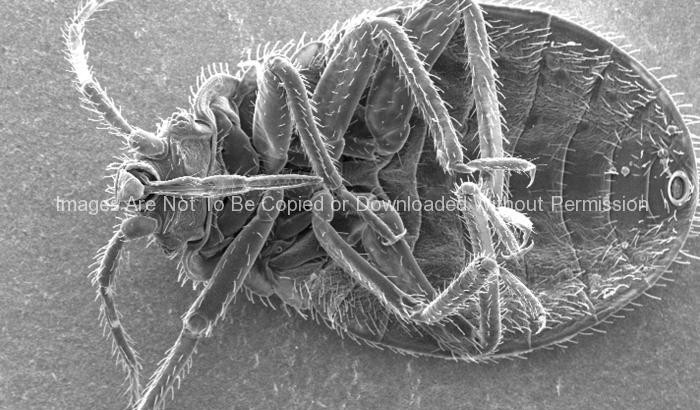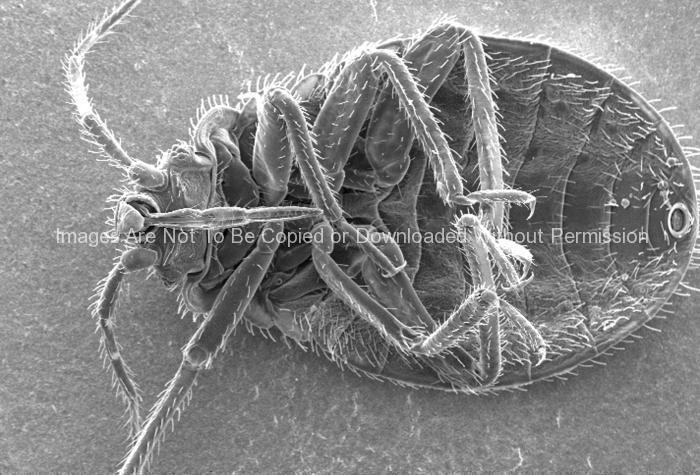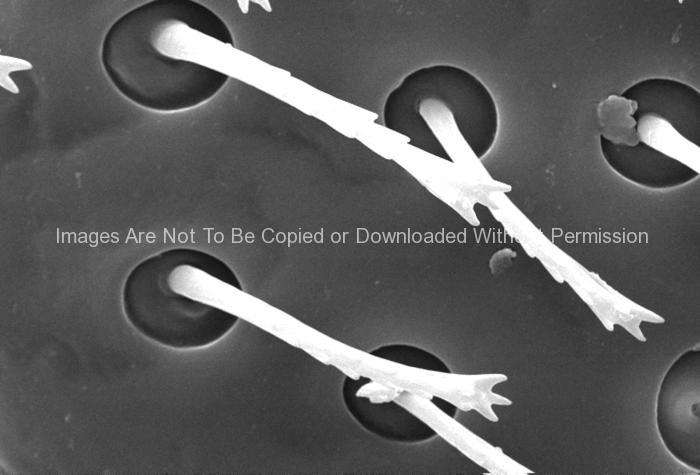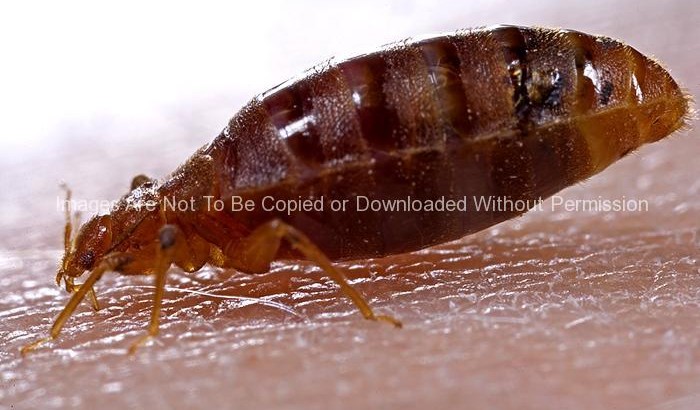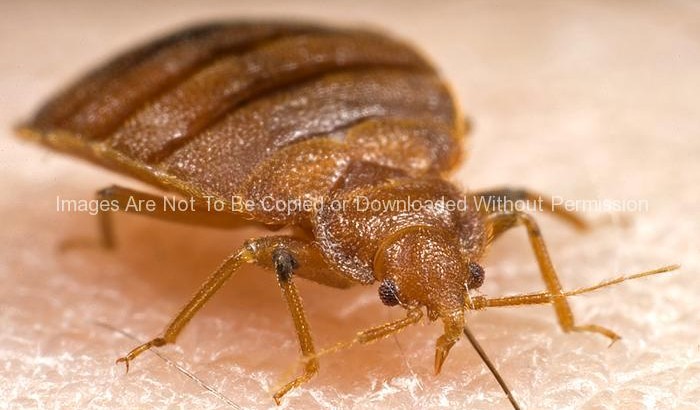This digitally-colorized scanning electron micrograph (SEM) revealed some of the ultrastructural morphology displayed on the ventral surface of a bedbug, Cimex lectularius. From this view, at the top, you can see the insect’s skin piercing mouthparts it uses to obtain its blood meal, as well as a number of its disarticulated six jointed legs. You’ll also notice a beautiful diaphanous structure at the bottom of the image. It is speculated that this wondrous ultrastructural organ is most probably a scent gland, or related to the dissemination of scent, which may be pheromonal in nature. A further dissection of this, and the adjacent mesothoracic region, could possibly reveal an internalized aspect of this organ, which would be glandular in nature, and actually involved in the production of the aromatic chemical.
bedbugs
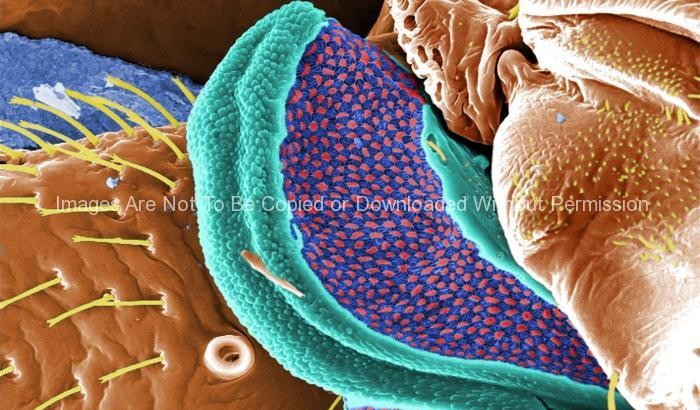
Ultrastructural Morphology Displayed on the Ventral Surface of a Bedbug (Cimex lectularius)
This digitally-colorized scanning electron micrograph (SEM) revealed some of the ultrastructural morphology displayed on the ventral surface of a bedbug, Cimex lectularius. From this view, at the top, you can see the insect’s skin piercing mouthparts it uses to obtain its blood meal, as well as a number of its disarticulated six jointed legs. You’ll also notice a beautiful diaphanous structure at the bottom of the image. It is speculated that this wondrous ultrastructural organ is most probably a scent gland, or related to the dissemination of scent, which may be pheromonal in nature. A further dissection of this, and the adjacent mesothoracic region, could possibly reveal an internalized aspect of this organ, which would be glandular in nature, and actually involved in the production of the aromatic chemical.
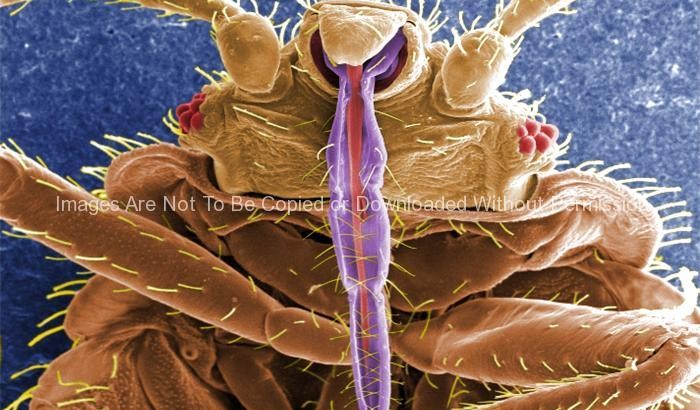
Skin Piercing Mouthparts of a Bedbug, (Cimex lectularius)
This digially-colorized scanning electron micrograph (SEM) revealed some of the ultrastructural morphology displayed on the ventral surface of a bedbug, Cimex lectularius. From this view you can see the insect’s skin piercing mouthparts it uses to obtain its blood meal, as well as a number of its six jointed legs.
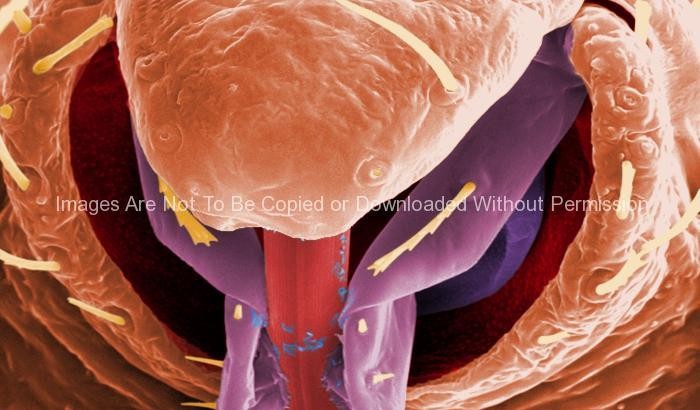
Ultrastructural Morphology on the Rostral Head Region of a Bedbug (Cimex lectularius)
This highly-magnified, digitally-colorized scanning electron micrograph (SEM) revealed some of the ultrastructural morphology displayed on the rostral head region of a bedbug, Cimex lectularius. Note the proximal anatomical relationships the insect’s skin piercing mouthparts it uses to obtain its blood meal, and how they join the head.
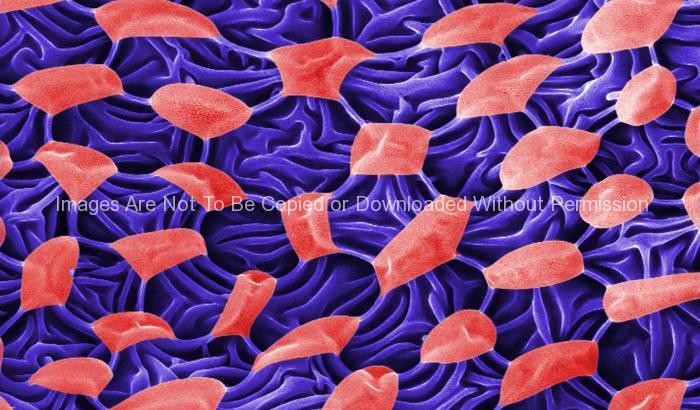
Ultrastructural Morphology Displayed on the Ventral Surface of a bedbug (Cimex lectularius)
This digitally-colorized scanning electron micrograph (SEM) revealed some of the ultrastructural morphology displayed on the ventral surface of a bedbug, Cimex lectularius. From this view, at the top, you can see the insect’s skin piercing mouthparts it uses to obtain its blood meal, as well as a number of its disarticulated six jointed legs. You’ll also notice a beautiful diaphanous structure at the bottom of the image. It is speculated that this wondrous ultrastructural organ is most probably a scent gland, or related to the dissemination of scent, which may be pheromonal in nature. A further dissection of this, and the adjacent mesothoracic region, could possibly reveal an internalized aspect of this organ, which would be glandular in nature, and actually involved in the production of the aromatic chemical.
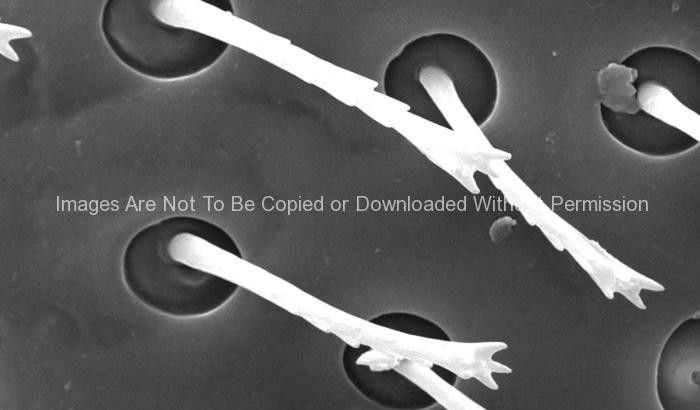
Ultrastructural Morphology on the Head of a Bedbug (Cimex lectularius)
This scanning electron micrograph (SEM) revealed some of the ultrastructural morphology displayed on the head region of a bedbug, Cimex lectularius. In this particular view, what appeared to be “hairs” were not hairs at all, but sensory structures known as “setae”, which are composed of chitin, the same material as the rest of this organism’s exoskeleton.
Chitin is a molecule made up of bound units of acetylglucosamine, joined in such a way as to allow for increased points at which hydrogen bonding can occur. In this way chitin provides increased strength, and durability as an exoskeletal foundation.
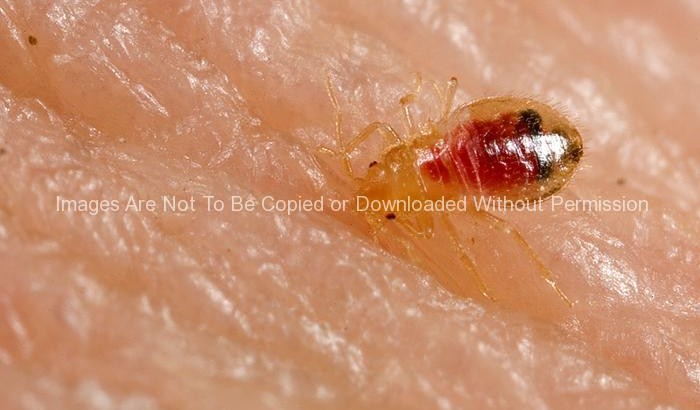
Dorsal View of a Bedbug Nymph (Cimex lectularius)
This photograph depicts a dorsal view of a bedbug nymph, Cimex lectularius, as it was in the process of ingesting a blood meal from the arm of a “voluntary” human host, which could be seen filling the insect’s abdomen.
Bedbugs are not vectors in nature of any known human disease. Although some disease organisms have been recovered from bedbugs under laboratory conditions, none have been shown to be transmitted by bedbugs outside of the laboratory.
The common bedbug is found worldwide. Infestations are common in the developing world, occurring in settings of unsanitary living conditions and severe crowding. In North America and Western Europe, bedbug infestations became rare during the second half of the 20th century and have been viewed as a condition that occurs in travelers returning from developing countries. However, anecdotal reports suggest that bedbugs are increasingly common in the United States, Canada, and the United Kingdom.
